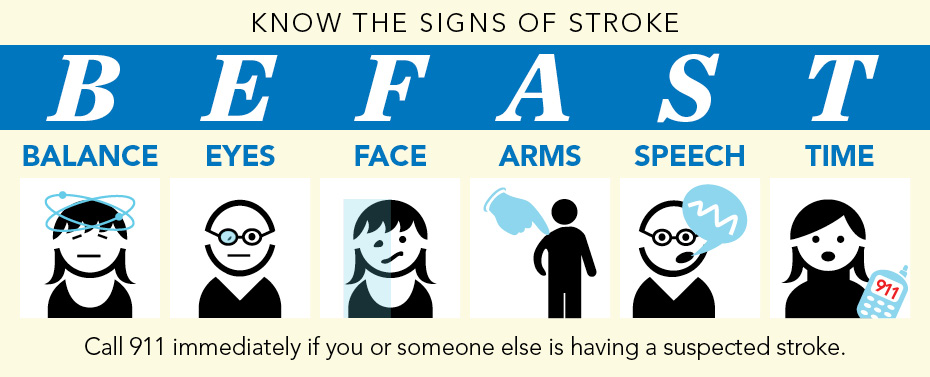Stroke Diagnosis & Treatment

Our Stroke Center team is made up of physicians, nurses, and other professionals in neurology and neurosurgery, emergency medicine, critical care, interventional cardiology, emergency medical services, rehabilitation medicine, radiology, laboratory, pharmacy, dietary, and other areas. We work together to provide the highest-quality care for stroke patients, across all stages of stroke care.
Diagnosing a Stroke
A stroke is a medical emergency, often responded to by ambulance. When our ambulance team reaches you, our Emergency Department is contacted, which in turn sets off an alert to our stroke team. When you arrive, our team does an immediate assessment and CT scan. The brain scan is reviewed by a radiologist and a neurologist.
Tele-stroke Service
If a neurologist is not on-site, our emergency department team can connect immediately to one of our neurologists through a secure remote monitoring tool. The neurologist is able to visually evaluate a patient and make recommendations to the emergency department team. By using telemedicine for stroke, we can reduce the time it takes to have a neurology consultation and get medication administered, improving the quality of care.
Stroke Assessment
A stroke assessment may include:
- Checking for problems with vision, movement, feeling, reflexes, understanding, and speaking. Your doctor and nurses will repeat this exam over time to see if your stroke is getting worse or improving.
- Listening for an abnormal sound, called a “bruit,” when using a stethoscope to listen to the carotid arteries in the neck. A bruit is caused by abnormal blood flow.
- Checking for high blood pressure
- Angiogram of the head to look for a blood vessel that is blocked or bleeding
- Carotid duplex (ultrasound) to see if the carotid arteries in your neck have narrowed
- Echocardiogram to see if the stroke could have been caused by a blood clot from the heart
- Magnetic resonance angiography (MRA) or CT angiography to check for abnormal blood vessels in the brain
- Blood tests
- Electrocardiogram (ECG) and heart rhythm monitoring
Stroke Treatment
People who are having stroke symptoms need to get to a hospital as quickly as possible. If the stroke is caused by a blood clot, a clot-busting drug, called tPA (tissue plasminogen activator) or Alteplase, may be given to dissolve the clot.
To be effective, this treatment must be started within 3-4 1/2 hours of when the symptoms first started. The sooner this treatment is started, the better chances of a good outcome.
Other treatments given in the hospital will depend on the cause of the stroke. These may include:
- Blood thinners such as heparin, warfarin (Coumadin), aspirin, or clopidogrel (Plavix)
- Medicine to control risk factors, such as high blood pressure, diabetes, and high cholesterol
- Special procedures or surgery to relieve symptoms or prevent more strokes
- Nutrients and fluids
Recovery and Outlook
After you are treated and stabilized, you will be admitted to our inpatient stroke unit, where rehabilitation will begin. Physical, speech, and occupational therapists will work together to help you through the recovery process and in planning the transition home or to a rehab facility.
How well a person does after a stroke depends on:
- The type of stroke
- How much brain tissue is damaged
- What body functions have been affected
- How quickly treatment is given
Problems moving, thinking, and talking often improve in the weeks to months after a stroke. Many people who have had a stroke will keep improving in the months or years after their stroke. Over half of people who have a stroke are able to function and live at home. Others are not able to care for themselves.
If treatment with clot-busting drugs is successful, the symptoms of a stroke may go away. However, patients often do not get to the hospital soon enough to receive these drugs, or they cannot take these drugs because of a health condition.
People who have a stroke due to a blood clot (ischemic stroke) have a better chance of surviving than those who have a stroke due to bleeding in the brain (hemorrhagic stroke).
The risk for a second stroke is highest during the weeks or months after the first stroke. The risk begins to decrease after this period.
